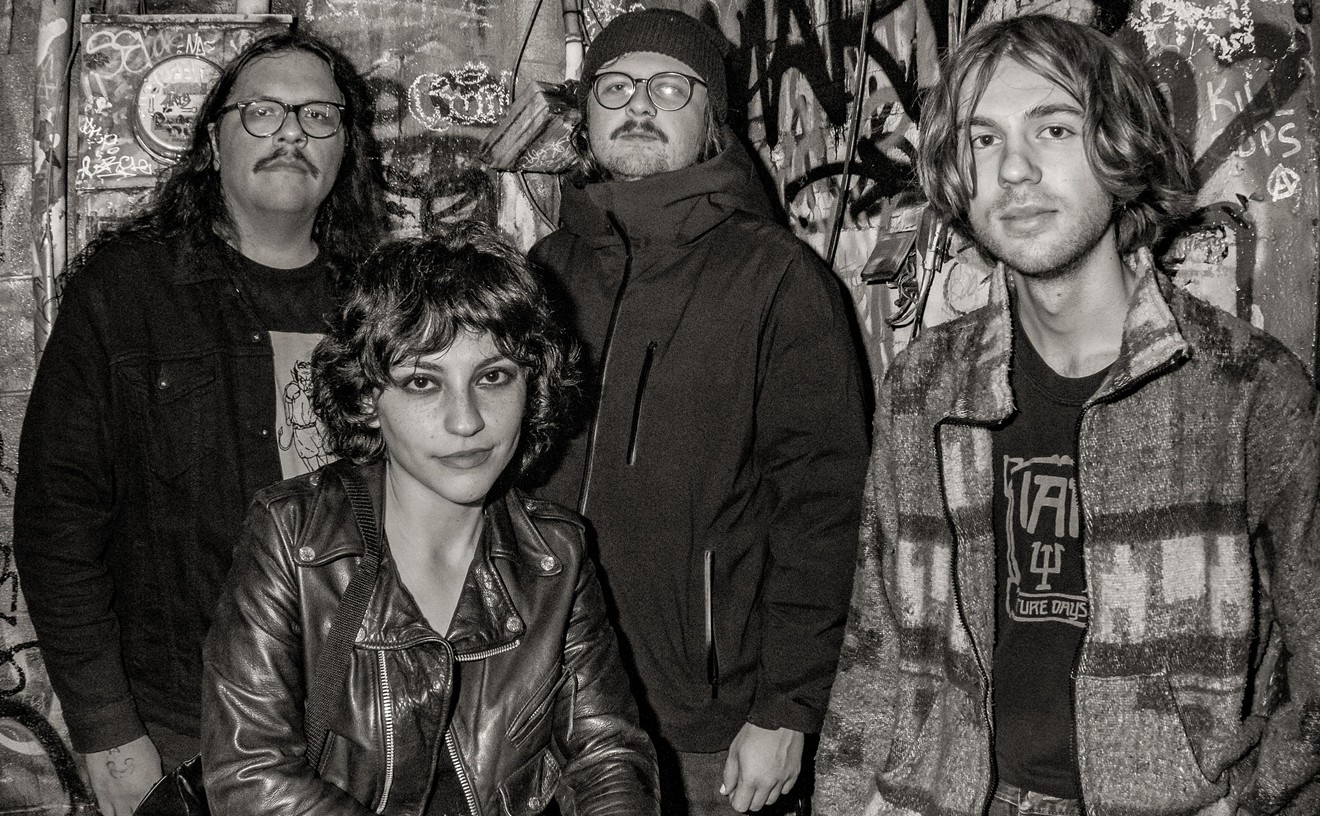An upended, dismembered piano sits in the middle of the floor at the ATLAS Black Box Experimental Studio, deep below the University of Colorado Boulder campus. Kneeling before it, a slight, older man is wiring the piano pieces to an array of electromechanical devices. He is the mononominate sound artist Trimpin, a recipient of MacArthur and Guggenheim grants, and tomorrow night this creation and other contraptions will become an interactive sound installation.
Trimpin explodes the divisions between disciplines. He creates sculptures that make music – one of his best-known works is IF VI WAS IX, a tower of 300 self-tuning guitars commissioned by Microsoft co-founder Paul Allen for his EMP Museum in Seattle. He’s interested in space and acoustics, how things sound. He uses, and advocates the knowledge of, whatever crafts are necessary to make the work come to life – from basic engineering and handwork to digital composition. He's using all these skills during his four days in Boulder, hammering out the project that debuts at a free event Saturday night.
Trimpin moved to the U.S. in 1980 because this country had more junk – that is, well-crafted used mechanical components he could use to make his strumming, hammering sound-making machines. “In Germany, an artist can’t ask for something a plumber would use,” Trimpin says. "You ask for a part and they say, ‘What is your company?’ I say, ‘I have no company.’ And – click! Zzzzzz! Or, ‘What do you want it for?’ Then you tell them, and they say, ‘You can’t use it like that!’ In America, you want to help people.”
Driven by motors, MIDI and computer, his creations issue dense-to-delicate sound patterns tailored to the installation site – what is termed “creative investigations of acoustic music in spatial relationship.” Tonal waves and progressions, often expressed in the microtones that live in the cracks between the notes acknowledged in Western scales, flood the listener from multiple directions. Passages, partly written and partly generated by light, wind, motion or joystick, combine and collide.
Improvising with found objects and a minimal budget, it took Trimpin years to be recognized for work about which he is now at best ambivalent, preferring to focus on the project at hand. His musical influences are diverse but share the element of being outsiders, iconoclasts such as Harry Partch, Henry Brant, Xenakis, Zappa, Antheil, Conlon Nancarrow and Meredith Monk. (Trimpin preserved many of Nancarrow’s special scores for player piano. That composer pioneered playback technology to create pieces that couldn’t possibly be performed by a human being.)
At a lunch/work session, Trimpin discusses the problems of being original and unclassifiable. “The music world would say, ‘That is not music, that is something else.’ There, and in many places, there are guilds. They want to protect their business. It was very difficult sometimes," he admits." But then, it began to turn and now there is a community, around the world, through the Internet, of us who are creating this kind of work. It’s very tight, but open."
Trimble develops the sound of a piece after testing the acoustics of the performance space, if possible. If that’s not possible, “I make the composition flexible enough to alter dynamics and rhythm,” he says. His pieces are designed to last at least fifteen years before repairs are needed; he does not issue warranties, but he will maintain them as best he can. “I very rarely use any commercial parts,” he says. “They do not last. In fact, when Paul Allen, from Microsoft, asked me to make the tower of guitars, what was the first component to fail? One from Microsoft.”
Nearby at Seattle's Frye Museum, his Klompen features 96 tuned wooden clogs that play music, showing that he knows a lot about human engineering as well as mechanical. “I did not make a start button that you just push,” he says. “You have to put in a quarter. You push a button, you walk away. You pay money, you stay and listen. In two months, people put 14,000 quarters into the piece. We gave it all to the local food bank.”
Trimpin at the ATLAS Institute will be presented from 7 to 9:30 p.m. Saturday, November 14 in the ATLAS Institute Black Box Experimental Studio, 1125 18th Street, Basement Level B2, on the CU-Boulder campus. The event is free; for more info visit atlas.colorado.edu.
[
{
"name": "Air - MediumRectangle - Inline Content - Mobile Display Size",
"component": "12017618",
"insertPoint": "2",
"requiredCountToDisplay": "2"
},{
"name": "Editor Picks",
"component": "17242653",
"insertPoint": "4",
"requiredCountToDisplay": "1"
},{
"name": "Inline Links",
"component": "18838239",
"insertPoint": "8th",
"startingPoint": 8,
"requiredCountToDisplay": "7",
"maxInsertions": 25
},{
"name": "Air - MediumRectangle - Combo - Inline Content",
"component": "17261320",
"insertPoint": "8th",
"startingPoint": 8,
"requiredCountToDisplay": "7",
"maxInsertions": 25
},{
"name": "Inline Links",
"component": "18838239",
"insertPoint": "8th",
"startingPoint": 12,
"requiredCountToDisplay": "11",
"maxInsertions": 25
},{
"name": "Air - Leaderboard Tower - Combo - Inline Content",
"component": "17261321",
"insertPoint": "8th",
"startingPoint": 12,
"requiredCountToDisplay": "11",
"maxInsertions": 25
}
]











